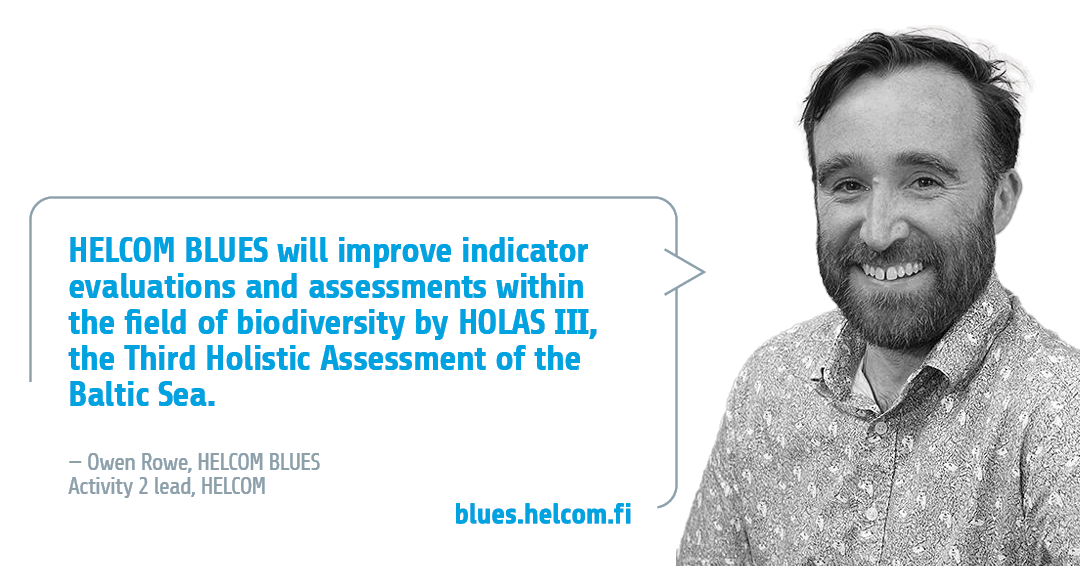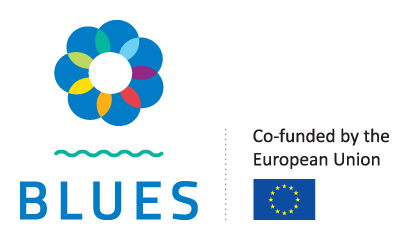
Owen Rowe is working on HELCOM BLUES Activity 2 related to Biodiversity aspects, including topics related to bycatch, fish, harbour porpoise, pelagic habitats, food webs and integrated assessments. Owen is currently the HELCOM indicator manager and has a research background in environmental microbiology and ecology, including studies in the Baltic Sea.
What is Activity 2 all about? What main challenges does it try to solve?
Activity 2 focusses on several biodiversity aspects, including: fish, by-catch of marine mammals and waterbirds, pelagic habitats, the harbour porpoise, and the integrated assessment of biodiversity, where approaches for addressing Baltic Sea food webs will also be explored. The Activity aims to improve or develop indicators and methodologies, including where possible, to analyze topics for which data may be limited but management and conservation issues are vital to urgently address (e.g. the harbour porpoise and by-catch of mammals and waterbirds).
What are the planned outcomes of the Activity 2?
Overall the focus will be on improved indicator evaluations or analyses within the field of biodiversity by HOLAS III (the Third Holistic Assessment of the Baltic Sea). In simple terms the aim is to further develop HELCOM indicators and assessments so that the level of operationalization, the scale of implementation, and/or the methodologies and data behind them are significantly improved (or where the topic has previously not been addressed). It is envisaged that development will take place related to the following indicators or assessment topics: coastal fish abundance and size structure, marine mammal and waterbird bycatch, zooplankton mean size and total stock, phytoplankton seasonal succession, an overall pelagic habitats assessment, the understanding of harbour porpoise abundance and distribution, the integrated assessment of biodiversity, and developments towards addressing food webs in the Baltic Sea.
How will Activity 2 benefit the protection of the marine environment of the Baltic Sea? Are there benefits for your organisation (HELCOM) as well?
All the work in Activity 2 focuses on improved indicators or assessments and these represent critical components in the management cycle as they address the status of the Baltic Sea environment and provide managers with a basis for implementing measures. In general the work under Activity 2 builds on earlier work in HELCOM, including work supported by earlier EU co-financed initiatives, and the outcomes should support the implementation of the Baltic Sea Action Plan and the EU Marine Strategy Framework Directive, for those HELCOM Contracting Parties that are also EU Member States. Overall, the work will improve the level, scale and scope of assessments carried out on the Baltic Sea marine environment, building a greater understanding of the status of the environment and its component parts.
